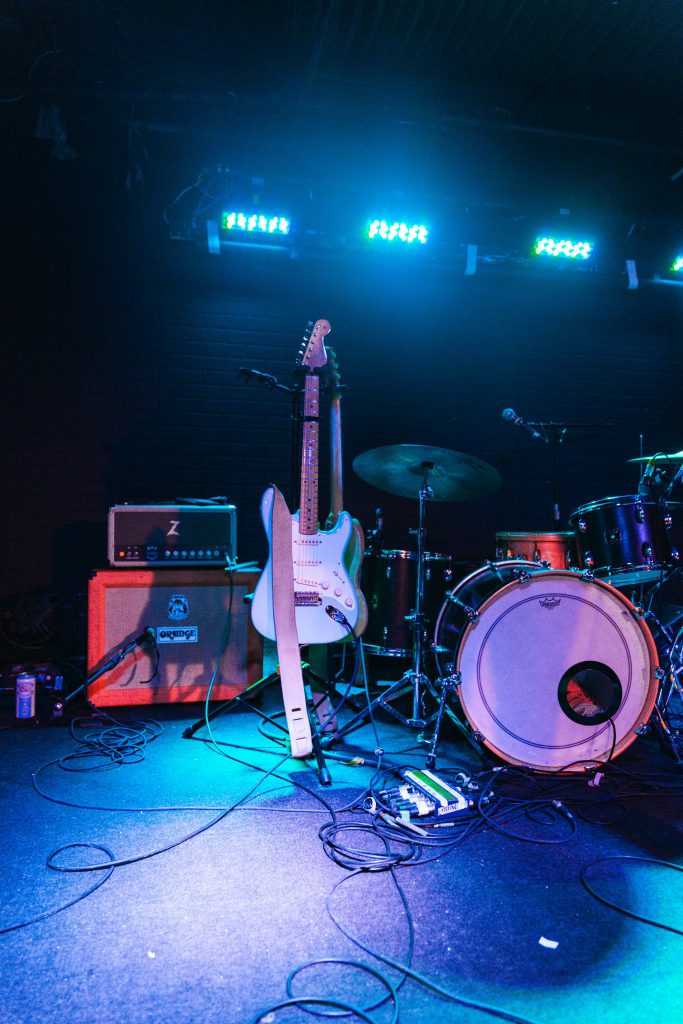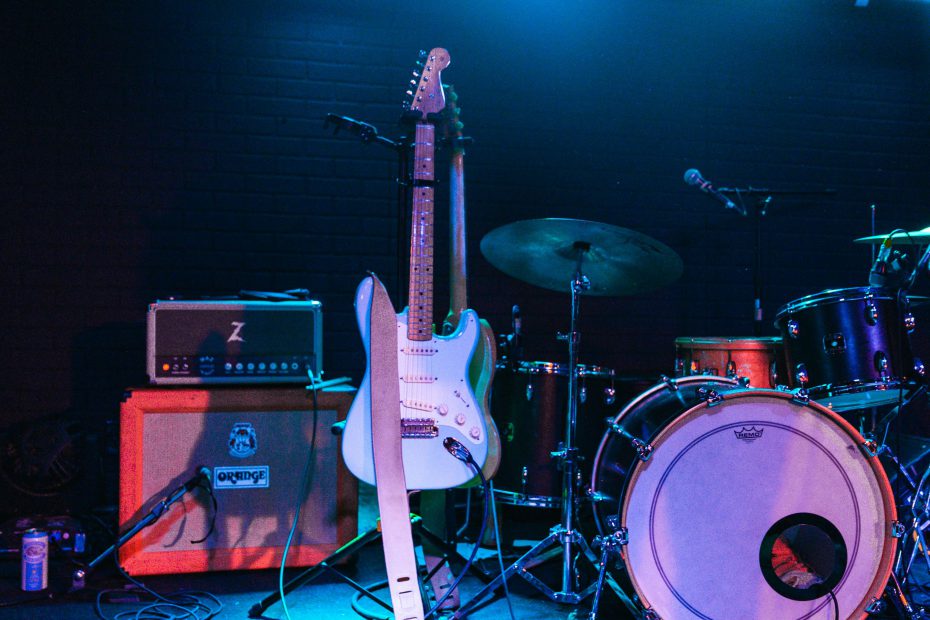Building your own Class D guitar power amplifier can be an exciting and rewarding project for audio enthusiasts, musicians, and electronics hobbyists alike. Class D amplifiers are widely praised for their efficiency, compact size, and ability to deliver powerful output with less heat generation compared to other types of amplifiers. For guitarists, a DIY Class D amp can provide the perfect way to create a custom amplifier tailored to specific preferences in sound and performance.
This guide is aimed at beginners who want to build their own Class D guitar power amp in the 50 to 100-watt range. We’ll walk through the design considerations, the components you’ll need, and how to assemble everything into a functional amplifier that can stand up to the rigors of a live performance or practice session.

Why Choose a Class D Guitar Power Amp?
Efficiency and Size
One of the main reasons many guitarists opt for a Class D guitar power amplifier is efficiency. Unlike traditional Class A or Class AB amplifiers, which convert a large portion of energy into heat, Class D amplifiers utilize a more efficient switching technique that reduces power loss. This means that a Class D amplifier can produce the same output power while generating less heat, which is ideal for maintaining consistent performance and prolonging the lifespan of the components.
Additionally, Class D amps tend to be much more compact and lightweight than their analog counterparts, making them perfect for musicians who require portability, especially when traveling to gigs or studio sessions.
Power Output and Customization
A 50 to 100-watt Class D amplifier is a sweet spot for most electric guitarists. This power range provides enough headroom to drive speakers effectively, whether you’re practicing at home or performing on stage. It’s also versatile enough to handle a wide variety of guitar tones, from clean and pristine to overdriven and distorted.
What makes building your own amplifier even more exciting is the ability to customize the design to your specific preferences. You can choose the type of circuit, tone control options, and additional features such as built-in effects or Bluetooth connectivity. Whether you want a pristine clean sound or a heavy, distorted tone, the power amp design can be adjusted to suit your needs.
Components You’ll Need to Build a Class D Guitar Power Amp
Power Supply
The power supply is the heart of any amplifier, and Class D amplifiers are no exception. For a 50 to 100-watt amplifier, you’ll need a robust power supply that can deliver stable voltage to your circuit. The power supply should ideally provide +/- 35V to 50V DC, which is typically sufficient for achieving the desired output wattage.
You can either design your own power supply or purchase a ready-made unit designed for Class D audio amplifiers. Be sure to choose a high-quality supply to avoid noise or distortion affecting the performance of your amplifier.
Class D Audio Amplifier IC
The next essential component is the Class D audio amplifier IC. These integrated circuits are designed to handle the switching of the audio signal efficiently. Popular options for DIY builders include chips from manufacturers like Texas Instruments, Infineon, or STMicroelectronics. These ICs are available in a range of power ratings and provide all the essential functionality for audio amplification.
For a 50 to 100-watt output, look for amplifier ICs that are rated for at least 100W output power with a low total harmonic distortion (THD) and high efficiency. The IC you choose will dictate much of the final sound quality, so it’s important to select one that meets your expectations for tonal clarity and performance.
Passive Components
Aside from the power supply and amplifier IC, you’ll need various passive components like resistors, capacitors, and inductors. These components shape the audio signal and provide stability to the amplifier circuit. Key components include:
Capacitors: Used for filtering and coupling the signal, as well as providing energy storage.
Inductors: Often used in the output stage of Class D amplifiers to smooth out the switching process and reduce noise.
Resistors: Used for biasing and controlling the gain structure of the amplifier.
Make sure to select components rated for audio applications, as they will provide the best performance and longevity for your amp.
Building the Circuit and Assembling the Amp
Designing the Circuit
Designing the Class D amplifier circuit involves connecting the power supply to the amplifier IC, adding filtering capacitors to smooth out any voltage fluctuations, and setting up the output stage to drive speakers. You’ll also need to include an input stage for receiving the audio signal from your guitar, as well as tone controls if desired.
If you’re not comfortable designing your own circuit, many DIY audio forums and resources offer Class D amplifier circuit diagrams that you can follow. These can serve as a starting point, allowing you to make adjustments based on your preferred configuration.
Assembling the Components
Once you have all the components and the circuit design, the next step is assembly. Begin by mounting the power supply, followed by the amplifier IC, and then connect the various passive components like capacitors and inductors according to the circuit diagram. It’s important to ensure that all connections are secure and properly insulated to prevent short circuits.
After the basic circuit is assembled, you’ll need to connect the output stage to your speaker terminals, ensuring that the power output is routed to the appropriate speakers (usually 8 ohms or 4 ohms, depending on your design).
Finally, you can install your circuit into a chassis to protect the components and provide a durable enclosure. Be sure to leave proper ventilation to prevent the amp from overheating.
Testing and Troubleshooting
Initial Testing
Once the Class D guitar power amplifier is fully assembled, it’s time for testing. Begin by testing the power supply with a multimeter to ensure that the correct voltages are present. Afterward, connect the amplifier to a dummy load (a resistive load that simulates a speaker) to avoid damaging your speakers during testing.
Power up the amplifier, and start testing the audio signal by sending a guitar signal through the input. Adjust the gain and volume controls as needed to ensure the amp performs as expected. Listen for any distortion or buzzing, as this can indicate problems with the circuit, such as grounding issues or incorrect component values.
Troubleshooting Tips
Common issues with Class D amplifiers include:
No Sound Output: Check the power supply and the connections to the output stage. Ensure that all components are seated correctly, and the solder joints are clean and secure.
Distortion or Hum: This could be a sign of poor grounding or inadequate filtering in the power supply. Revisit your capacitor and inductor placements to ensure smooth signal flow.
Overheating: If your amp is getting too hot, ensure that the heat sinks are properly attached to the amplifier IC and that there’s enough ventilation in the enclosure.
Building Your Own 50 to 100W Class D Guitar Power Amp
Building your own 50 to 100-watt Class D guitar power amplifier is a rewarding project that can significantly enhance your guitar rig. Not only does it give you full control over the design and features, but it also allows you to gain a deeper understanding of how amplifiers work and how you can tweak them for your own sound preferences.
With the right components, careful planning, and patience, you can create a Class D guitar power amp that delivers powerful, clean sound in a compact, efficient package. Whether you’re using it for practice or performing on stage, this DIY amp will provide the perfect solution for your needs. Happy building!
